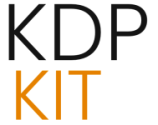How to Find a Great Illustrator for Your Children’s Book on KDP

Bringing a children’s book to life is a magical process, and illustrations are at its heart. For authors publishing through Amazon Kindle Direct Publishing (KDP), finding the right illustrator is a crucial step that can significantly impact the success and appeal of your book. This comprehensive tutorial will guide you through the entire process, from understanding the importance of illustrations to signing a contract and ensuring a smooth collaboration.
The Crucial Role of Illustrations in Children’s Books
In children’s literature, illustrations are far more than just decorative elements; they are powerful storytelling tools that convey emotions, actions, and the very essence of the narrative.
Illustrations can bridge language gaps, providing visual context for young readers who are still developing their literacy skills. They set the tone and mood of the book through color palettes, line styles, and overall design, making the reading experience more engaging and interactive. For children, a well-illustrated book can spark imagination, foster an appreciation for art and literature, and create a lasting emotional connection with characters and stories.
Understanding Illustration Styles and Trends
The world of children’s book illustration is dynamic, with evolving styles and trends that can capture the attention of young readers. As of 2024-2025, several key trends are shaping the industry:
- Vibrant and Bold Colors: Expect to see a continued emphasis on bright, bold color palettes that create visually striking and eye-catching illustrations. Gradients and color transitions are also popular for adding depth and movement.
- Diverse Representation: Illustrators are increasingly focusing on diversity, incorporating a wider range of skin tones, cultural influences, and authentic representation of different backgrounds and abilities.
- Hand-Drawn and Organic Styles: Despite the digital age, hand-drawn and organic illustration styles are gaining popularity for their personal and warm feel, offering a sense of authenticity.
- Minimalist Designs: Simple, clean designs with fewer colors can help focus attention on the story and make the book more accessible to young children.
- Cartoon and Comic Styles: These styles, characterized by funny expressions, bold lines, and bright colors, are highly engaging for children and bring life and emotion to narratives.
- Character-Centric Illustrations: Focusing on the main character’s emotions and adventures, often with simpler backgrounds, helps children connect with the story.
When choosing an illustrator, consider which style best complements your story’s theme, target age group, and overall message.
Where to Find a Children’s Book Illustrator
The digital age has opened up numerous avenues for authors to find talented illustrators. Here are some of the most effective platforms and methods:
Online Marketplaces and Platforms:
- Fiverr: Known for its user-friendly interface and diverse range of services, Fiverr is a popular choice for hiring illustrators, especially for those on a budget.
- Upwork: One of the largest freelance marketplaces, Upwork offers a vast pool of creative professionals, including illustrators with various specializations.
- Twine: This platform is tailored for creative professionals and emphasizes a curated talent pool, ensuring quality and relevant experience.
- Behance: A platform by Adobe, Behance showcases creative work from around the world, allowing you to discover illustrators and contact them directly.
- Dribbble: Similar to Behance, Dribbble is a community for designers to showcase their work, making it a great resource for finding illustrators with diverse styles.
- LinkedIn: While primarily a professional networking site, LinkedIn can be an excellent resource for finding illustrators who showcase their portfolios and connect with potential clients.
- Freelancer: Another global platform where you can post projects, review proposals, and hire illustrators.
- ArtStation: Popular among digital artists, ArtStation can be a good place to find illustrators with a focus on digital art.
Specialized Resources:
- Society of Children’s Book Writers and Illustrators (SCBWI): This organization offers a directory of illustrators who specialize in children’s books, providing a curated list of professionals.
- ChildrensIllustrators.com: A dedicated platform for finding illustrators specifically for children’s books.
- Illustrators For Hire: A curated directory of professional freelance illustrators from around the world.
- Illustration Agencies: Agencies represent illustrators and can be a good source for finding vetted professionals.
Other Avenues:
- Social Media: Platforms like Instagram can be used to discover illustrators by searching relevant hashtags and exploring their profiles.
- Art Colleges and Universities: Reaching out to art departments can help you find talented students or recent graduates looking for experience.
- Referrals: Ask for recommendations from other authors, illustrators, or industry professionals.
Defining Your Needs and Budget
Before you start your search, it’s essential to have a clear understanding of your project’s requirements:
- Define Your Vision: What is the overall style, mood, and aesthetic you envision for your book? Consider the target age group and how the illustrations should appeal to them.
- Determine the Scope: How many illustrations will your book require? Will they be full-page spreads, spot illustrations, or a combination?
- Set a Budget: Illustrator rates vary widely based on experience, style, and the complexity of the project. Research typical costs and determine a realistic budget. For a 32-page children’s book, costs can range from a few hundred dollars to several thousand.
- Page Count and Trim Size: Knowing your book’s intended page count and trim size is crucial for illustrators to create artwork with the correct dimensions. KDP has specific requirements for page counts (e.g., divisible by 4 for paperbacks) and trim sizes.
Vetting Potential Illustrators
Once you have a shortlist of potential illustrators, it’s time to vet them thoroughly:
Review Portfolios:
Examine their portfolios carefully to assess their style, technical skills, and consistency. Look for illustrators whose work aligns with your vision for the book. Pay attention to:
- Style Consistency: Does the illustrator maintain a consistent style throughout their work?
- Artistic Quality: Are the illustrations well-executed, with good composition, color theory, and attention to detail?
- Emotional Expression: Can the illustrations convey the emotions and personality of the characters?
- Experience with Children’s Books: Have they illustrated for children’s books before, and do they understand the unique demands of this genre?
Check Reviews and Testimonials:
Look for feedback from previous clients to gauge the illustrator’s professionalism, reliability, and communication skills. Consider purchasing one of their previously illustrated books to assess the quality and consistency of their work firsthand.
Communicate and Ask Questions:
Reach out to your shortlisted illustrators and ask key questions:
- Have they illustrated for a book in your genre before?
- What is their typical process and timeline?
- What are their payment terms and schedule?
- How many revisions are included in their fee?
- Do they understand KDP formatting requirements or are they willing to learn?
- How do they handle communication and feedback?
Request a Sample Illustration:
For illustrators you are seriously considering, requesting a paid sample illustration can be invaluable. This allows you to see how effectively they can translate your writing into visuals and how well they follow instructions. While some may offer a small sketch for free, be prepared to pay for a sample.
The Illustrator Contract: Key Elements
A well-drafted contract is essential to protect both you and the illustrator, ensuring clear expectations and preventing future disputes. Key elements to include are:
- Scope of Work: Clearly define the number of illustrations, their sizes, style, and placement within the book.
- Deliverables: Specify the format in which the final artwork will be delivered (e.g., high-resolution JPEGs, PSD files).
- Timeline: Outline specific deadlines for sketches, revisions, and final artwork delivery.
- Payment Terms: Detail the total fee, payment schedule (e.g., milestone payments), and accepted payment methods.
- Revisions: Specify the number of revision rounds included and the process for handling additional revisions.
- Copyright and Usage Rights: Clearly state who owns the copyright and how the illustrations can be used. For KDP self-publishing, authors typically retain copyright, with the illustrator receiving a flat fee for their services.
- Kill Fee: Include a clause for compensation if the project is canceled.
- Confidentiality: An NDA may be included to protect sensitive project information.
- Applicable Law: Specify the jurisdiction that will govern the contract.
- Signatures: Ensure the contract is signed by both parties.
Many illustrators will provide a contract, but it’s crucial to review it carefully, especially if working with a publisher. If you’re working with an independent illustrator, consider using a template or seeking legal advice.
Collaboration and Communication
Effective communication is the cornerstone of a successful illustrator-author partnership.
- Provide Clear Briefs: Offer detailed descriptions of your characters, settings, and the emotions you want to convey in each illustration. A storyboard or book dummy can be extremely helpful in communicating your vision.
- Be Responsive: Respond promptly to the illustrator’s questions and feedback.
- Offer Constructive Feedback: Provide clear, specific, and constructive feedback during the revision process.
- Respect the Creative Process: While you have a vision, allow the illustrator creative freedom within the agreed-upon scope.
Formatting for KDP
Once the illustrations are complete, they need to be formatted correctly for KDP. This often involves using software like Adobe InDesign or Photoshop to ensure high resolution (300 dpi) and correct bleed and margin settings. Some authors opt to use tools like Canva for illustration and layout, especially if they are on a tight budget. It’s important to understand KDP’s specific formatting requirements for print and ebook versions, especially for fixed-format children’s books.
Conclusion
Finding and working with a children’s book illustrator is a rewarding journey. By understanding the trends, utilizing the right resources, clearly defining your needs, and fostering open communication, you can find a talented artist who will help bring your story to life and captivate young readers on Amazon KDP. Remember that a strong collaboration, backed by a clear contract, is key to a successful and enjoyable publishing experience.








